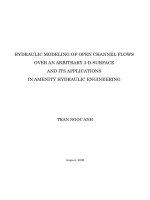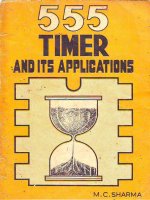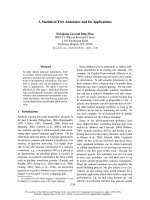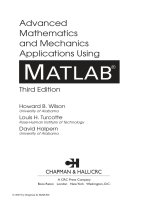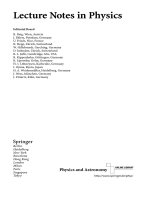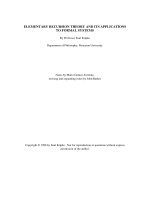Lecture Discrete mathematics and its applications - Introductory Lecture
Bạn đang xem bản rút gọn của tài liệu. Xem và tải ngay bản đầy đủ của tài liệu tại đây (1.08 MB, 7 trang )
Discrete Mathematics and
Its Applications
Introductory Lecture
Copyright © McGraw-Hill Education. All rights reserved. No reproduction or distribution without the prior written consent of McGraw-Hill Education.
What is Discrete
Mathematics?
Discrete mathematics is the part of mathematics devoted
to the study of discrete (as opposed to continuous) objects.
Calculus deals with continuous objects and is not part of
discrete mathematics.
Examples of discrete objects: integers, steps taken by a
computer program, distinct paths to travel from point A to
point B on a map along a road network, ways to pick a
winning set of numbers in a lottery.
A course in discrete mathematics provides the
mathematical background needed for all subsequent
courses in computer science and for all subsequent
Kinds of Problems Solved
Using
Discrete Mathematics
How many ways can a password be chosen following
specific rules?
How many valid Internet addresses are there?
What is the probability of winning a particular lottery?
Is there a link between two computers in a network?
How can I identify spam email messages?
How can I encrypt a message so that no unintended
recipient can read it?
How can we build a circuit that adds two integers?
Kinds of Problems Solved
Using
Discrete Mathematics
What is the shortest path between two cities using a
transportation system?
Find the shortest tour that visits each of a group of cities
only once and then ends in the starting city.
How can we represent English sentences so that a
computer can reason with them?
How can we prove that there are infinitely many prime
numbers?
How can a list of integers be sorted so that the integers
are in increasing order?
Goals of a Course in
Discrete
Mathematics
Mathematical Reasoning: Ability to read, understand,
and construct mathematical arguments and proofs.
Combinatorial Analysis: Techniques for counting
objects of different kinds.
Discrete Structures: Abstract mathematical structures
that represent objects and the relationships between them.
Examples are sets, permutations, relations, graphs, trees,
and finite state machines.
